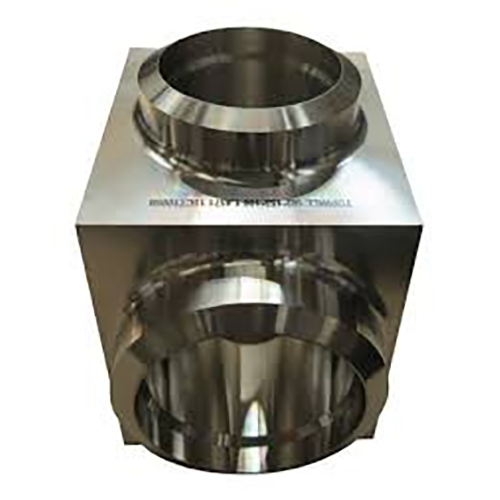
Securing exact surface quality on a machined component proves indispensable.
- Drawing callouts communicate precise surface requirements for machined parts
- Surface notes typically employ Ra—arithmetic mean deviation—when specifying roughness
- Decoding surface notes is important for ensuring components achieve required performance
- Specified roughness affects lubricant distribution, frictional performance, and durability
- It is essential to interpret the specific callout to achieve the desired outcome
Defining Precision in CNC Machining

Automated machining signifies a significant manufacturing innovation by leveraging computer-aided programs machines execute intricate designs with remarkable accuracy.
- The technology facilitates production of complex parts across many materials
- Broad CNC applicability benefits industries like aerospace, automotive, and healthcare
- Machine-controlled machining secures stable repeatability for production lots
Across R&D to production scale-up CNC machining drives manufacturing evolution
Understanding CNC Machine Specifications
Reading machine specs may appear overwhelming initially
Though a little background plus organization helps you interpret technical details effectively
Kick off by isolating primary specs such as rpm, feed, tolerance, workspace, controller
All these parameters affect the tool’s total functional output.
To illustrate, faster spindle rotation fits soft materials and quicker feed improves production rates.
Understanding these relationships will allow you to select the right CNC machine to match your specific requirements
It’s wise to study manufacturer documentation comprehensively.
Those resources usually offer helpful explanations and clarify jargon
What You Should Know About CNC Machines
Computer-operated machining stations are programmed units for precise automated part fabrication across materials They operate by interpreting digital instructions called G-code to control cutting tools or other actuators.
- Common CNC classes include milling machines, turning lathes, routing systems, plasma cutters
- CNC workflows handle steels, aluminum, plastics, woods, and composite laminates
- Plus CNC technology provides rapid prototype cycles and limited manufacturing for small firms and research units
CNC Fundamentals and Principles
They demonstrate convergence of tight hardware tolerances and refined software control These versatile tools utilize computer programming to automatically manufacture a wide range of parts from simple components to complex assemblies The central concept is rendering digital designs as physical parts.
- Machine-controlled machining
- Programmed manufacturing process
It uses accurate motion sequences commanded by the controller Technicians are essential for choosing cutting settings, supervising processes, and validating final quality.
Surface Finish Effects in CNC Production
Achieving the desired surface finish in CNC machining is crucial It shapes both functional outcomes and outward appearance The material, machining regimen, and subsequent finishing treatments contribute to surface quality.
Polished textures increase lifespan; rough finishes may lower effectiveness Automated machining presents a spectrum of techniques and tools to accomplish desired finishes.
- For example using different cutting tool geometries |high-speed steels|feed and speed combinations to realize required texture
- Furthermore secondary operations such as polishing, grinding, or sanding enhance finish
Grasping how machining variables affect texture is critical to obtain optimal outcomes.
Understanding CNC Machines: A Beginner's Guide
High-accuracy manufacturing via CNC employs programmed equipment to form components from varied materials They follow G-code sequences to generate complex parts reliably Grasping G-code, tool selection, and machine operation underpins successful manufacture
CNC serves diverse fields including aerospace, automotive, manufacturing, and electronics From turbine components to precision mold cores, CNC supports manufacture of complex parts
Notation for Surface Finish on Machined Parts
Accurate finish definition matters when machining parts with CNC It assures alignment with required performance and visual expectations Manufacturers often rely on Ra (roughness average) to represent surface finish This numerical value expressed in micrometers inches or millimeters indicates the average height of surface irregularities.
When specifying a surface finish callout consider both the required level of smoothness and the intended application of the part

Often a polished surface is selected when precise tolerance and fit are required
Textured surfaces may be selected to improve grip or frictional engagement
Leverage precise callout notation within drawings to indicate required finish Provide the roughness average and detail supplemental processes or treatments needed.
Remember that effective surface finish callouts are key to achieving a successful manufacturing outcome
Categories of CNC Machines and What They Do
The CNC ecosystem includes a broad selection of machines for multiple task categories They depend on CAD/CAM instruction to operate cutting tools for efficient part fabrication.
- Drilling units excel at producing holes and axial features in parts
- Grinders use abrasive wheels to finish and size parts to fine tolerances
- Laser cutters harness concentrated energy beams to slice through materials with exceptional accuracy and minimal heat distortion
Decision factors include the part’s material, feature complexity, and tolerance specifications Machine-specific strengths enable applications in fields ranging from aerospace to automotive engineering.
Obtaining High-Quality Surface Finish with CNC
Producing a high-quality finish matters across manufacturing and CNC approaches provide precise control to reach it With exact feed control spindle tuning and proper tool shapes machinists influence finish quality and minimize defects Additionally superior tool grades and effective lubrication aid in producing refined textures Deliberate machining strategies and exact setups enable production of components with excellent texture.
Realizing Finish through CNC Code
Tuning code to influence finish plays a central role in meeting quality aims Parametric choices for feed, speed, and tool shape govern surface smoothness and defects Precise setting selection and effective coolant control support high-quality finishes.
- Furthermore regular tool maintenance and inspection are essential for ensuring a consistent and high-quality surface finish over time Also ongoing tool care machine finishing symbols and inspection support sustained finish reliability Continuous tool maintenance and oversight preserve high finish consistency
- To improve surface outcome account for material, roughness target, and application
- Simulated machining supports parameter refinement to mitigate surface issues
- Besides that systematic tool upkeep and monitoring ensure sustained surface quality
